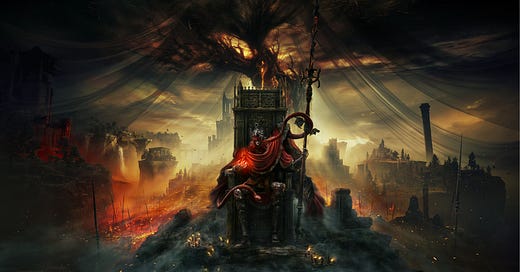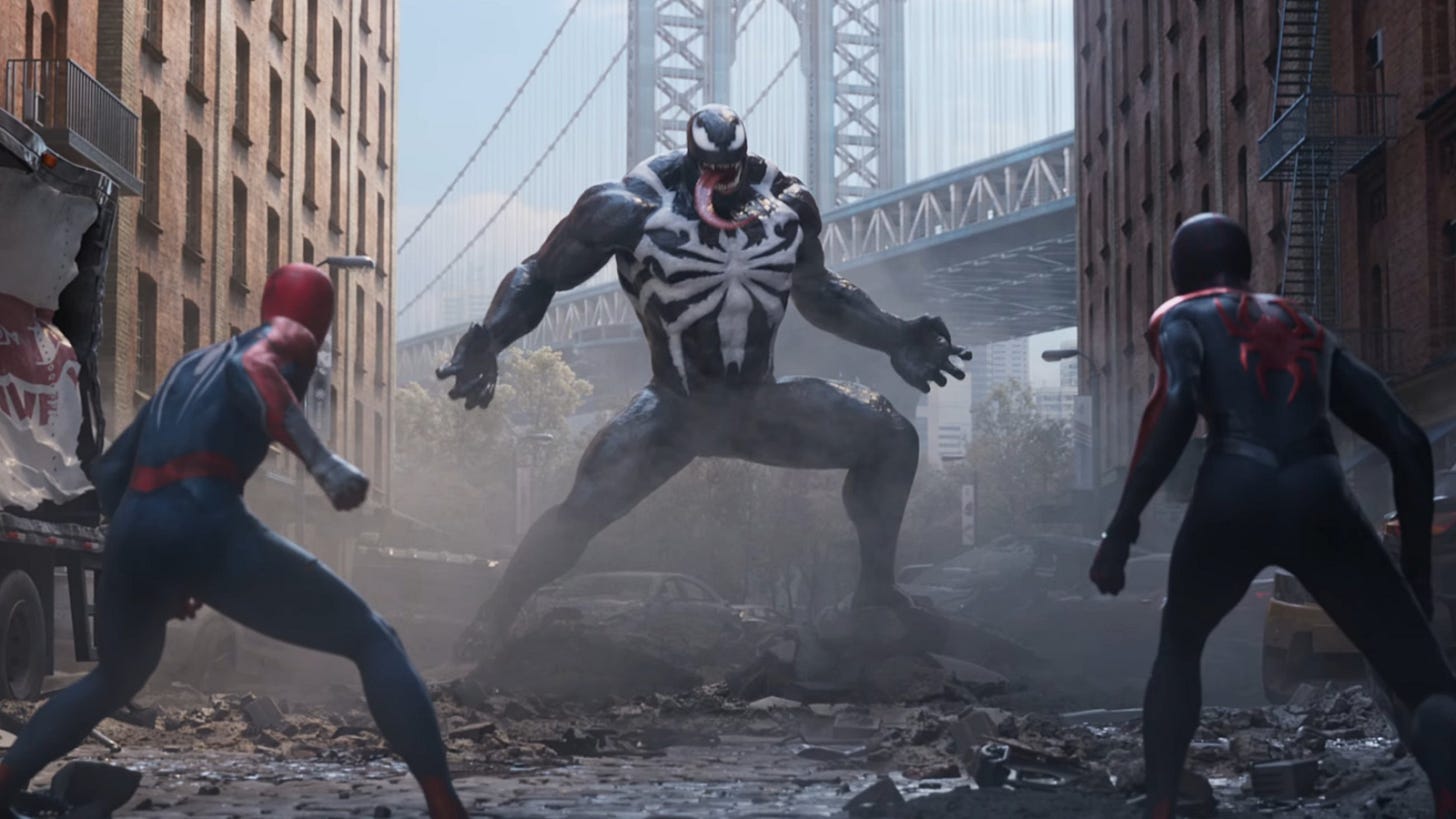In Japan, the PlayStation 5 is beginning to outpace its predecessor in sales for the first time; how does its library compare to the PlayStation 4's own at this point in its lifecycle?
The absence of a mainstream, generational classic greatly hinders the PS5's cultural standing.
Team Asobi’s name is a statement of intention: Asobi is a romanised form of the Japanese phrase 遊び, meaning ‘play, pleasure, or amusement’. Thus, upon considering their branding, Astro Bot’s charting of these three components represents the clearest evocation of a Sony studio’s identity this generation. As Naughty Dog has timidly remained in their kennel - save for three remasters and a cancelled multiplayer engagement - and Firewalk Studios burned to a crisp crossing the coals of community ire, Team Asobi and Insomniac’s nigh-restless ethic have helped establish lofty laurels for the platform to crest upon.
Indeed, Astro Bot has emerged as the PlayStation 5’s cute, yet killer app: beloved by critics and consumers in kind. Its canny conception, serving as an emergent museum for PlayStation’s storied history, functions both as a prodigiously intuitive platformer and a triumphant return to Sony’s roots. Curiously, it has taken the platform four years to approximate its ultimate ambition, culminating in the announcement of a mid-generation refresh that hit as a light drizzle, rather than a necessary rainfall.
The leap between the PlayStation 5 and its Pro counterpart is closer to a hop.
Compared to one another in their forty-seventh month, the PlayStation 5 has surpassed its predecessor in sales within Japan. In December of 2017, the PlayStation 4 notched 6.03 million sales; the PlayStation 5 currently stands at 6.07 million. Despite a ludicrous entry point of ¥79,980 for the base model and ¥119,980 for the emerging Pro rendition, the PS5 is faring rather well - in spite of wage decreases and a comparably weak Yen. Granted, this gouging was employed to combat foreign capital, rather than accomodate for their domestic audience. Regardless, it is rather audacious to ask for 24% or 36% of one’s average monthly earnings for the hardware alone, prior to surrendering ¥7,500 for a game. I bought a Nintendo Switch Lite for about ¥11,000 here; it is easy to conceive of the rationale favouring the latter.
The list of PlayStation 5 exclusives is rather lean, hardly worthy of an investment of this scale. The majority of this generation’s defining titles are accessible on the PlayStation 4; Black Ops 6, for instance, will be available to play on both itself and the Xbox One. In assessing a suite of the PlayStation 5’s most acclaimed titles, however, the results are middling, if not partially favourable:
God of War Ragnarök: PS4 & PS5
Elden Ring: PS4 & PS5
Resident Evil 4: PS4 & PS5
Street Fighter 6: PS4 & PS5
Horizon: Forbidden West: PS4 & PS5, though its DLC is limited to the latter.
Cyberpunk 2077: PS4 & PS5, same affliction as Horizon.
Star Wars Jedi Survivor: PS5, before being ported to the PS4.
Demon Souls: PS5
Astro Bot: PS5
Spider-Man 2 and Ratchet & Clank: Rift Apart: PS5
Final Fantasy Rebirth and Final Fantasy XVI: PS5
Baldur’s Gate 3: PS5
Evidently, marquee titles have generally maintained a cross-generational relationship. Final Fantasy, however, is known historically to push technical limitations, hence its two-UHD-disc depiction of Rebirth; Spider-Man, conversely, is Sony’s greatest incentive for its players to upgrade of all. Similarly, Astro Bot is an direct iteration upon Astro’s Playroom: a joyful guide to the PlayStation 5’s architecture pre-installed upon the console.
Elden Ring’s 2024 expansion, Shadow of the Erdtree, was made available for the PlayStation 4; its dark canopy was surprisingly inclusive.
The PlayStation 5’s SSD, however, is the lone marker of a true generational gap. Returning to the PlayStation 4, its laboured loading times hinder fluid engagement, save for miracle titles in the vein of Ghost of Tsushima. The differences between these two platforms are less significant than those characterising the relationship between the PlayStation 4 and the PlayStation 3; the profound upgrade from 512mb to 8gb of RAM redefined console gaming. Diametric diversions, however, particularly evidenced in the case of The Callisto Protocol’s cross-generation release against Dead Space’s current-generation reprisal, illustrate the profundity of the minutiae separating these models; the latter’s lucid terror took advantage of the SSD’s rate of locomotion to retain a fluency in its expression of dynamic dismemberment and environmental intricacy. In parallel, the PS5’s CPU can produce over two times the computing power of the PS4 Pro; the only mark in favour of the latter is its install base of 117.2 million.
By December of 2017, the PlayStation 4 could claim the following as current-generation exclusives:
Uncharted 4: A Thief’s End & Uncharted: The Lost Legacy
Dark Souls 3
Batman: Arkham Knight
NieR: Automata
Horizon: Zero Dawn
Fallout 4
Final Fantasy XV
Bloodborne
The Witcher 3: Wild Hunt
Destiny 2
Ratchet & Clank
These are true, substantial iterations upon prior works, or titles that would come to constitute the DNA of their generation. Compared to the aforementioned list of PlayStation 5 exclusives, its pool is significantly stronger. The shape of this generation was known by this point: one pioneered by strong storytelling in genial dialogue with burgeoning multiplayer biomes - Fortnite: Battle Royale debuted in September. I have fond memories of the madness of primordial Fortnite, though its current shape is far from its makeshift origin. in seven years it has evolved from a terse tournament to the playground of Disney, Lego, and coordinated music acts. However, as Fortnite has expanded, narrative experiences have contracted in delivery, burdened by extensive development times and bloated budgeting; Spider-Man 2’s cost of $315 million was three times greater than its predecessor. In this regard, Spider-Man 2 represents the crisis of this generation: creative strides are being greatly surpassed by their financial burden. This why Sony’s push for live-service revolutions of revenue - and its subsequent failure - has shaded their relationship with this generation: the service model remedies crunch, abates development costs, and, if successful, profits from continual fiscal investment, rather than a one-time licence fee.
Spider-Man 2, a breezy, cinematic spin through an expanded New York City, is an unintentional study in malaise and compromise.
Talk of the next generation has leaked from Sony’s competitor; Grand Theft Auto 6 will perform as a coda to this era, rather than an announcement. Consideration, ultimately, is a matter of what is happening, rather than what has happened. Incubation periods for Triple A titles are as strenuous as the hardware they are designed for - persistent updates, rather than whole artefacts, may render the following generation one driven by streaming. If publishers can control your time in their worlds, their unwieldy investments remain in their hands. Were Concord distributed entirely through digital means, it likely would have disappeared within days, rather than two weeks - nominal as the difference would be. Physical means of engagement in an age of 150gb titles, patches not included, are hindrances, despite their conveniences to consumers. At least we have Astro Bot to ease our quarrels with a controlled dose of nostalgia.







This is interesting. It does seem that the PS5 is still lagging in a big way to the previous generation and relying heavily on its predecessor's achievements. A bit like the PS3 struggling to rise above the monster that was the PS2.